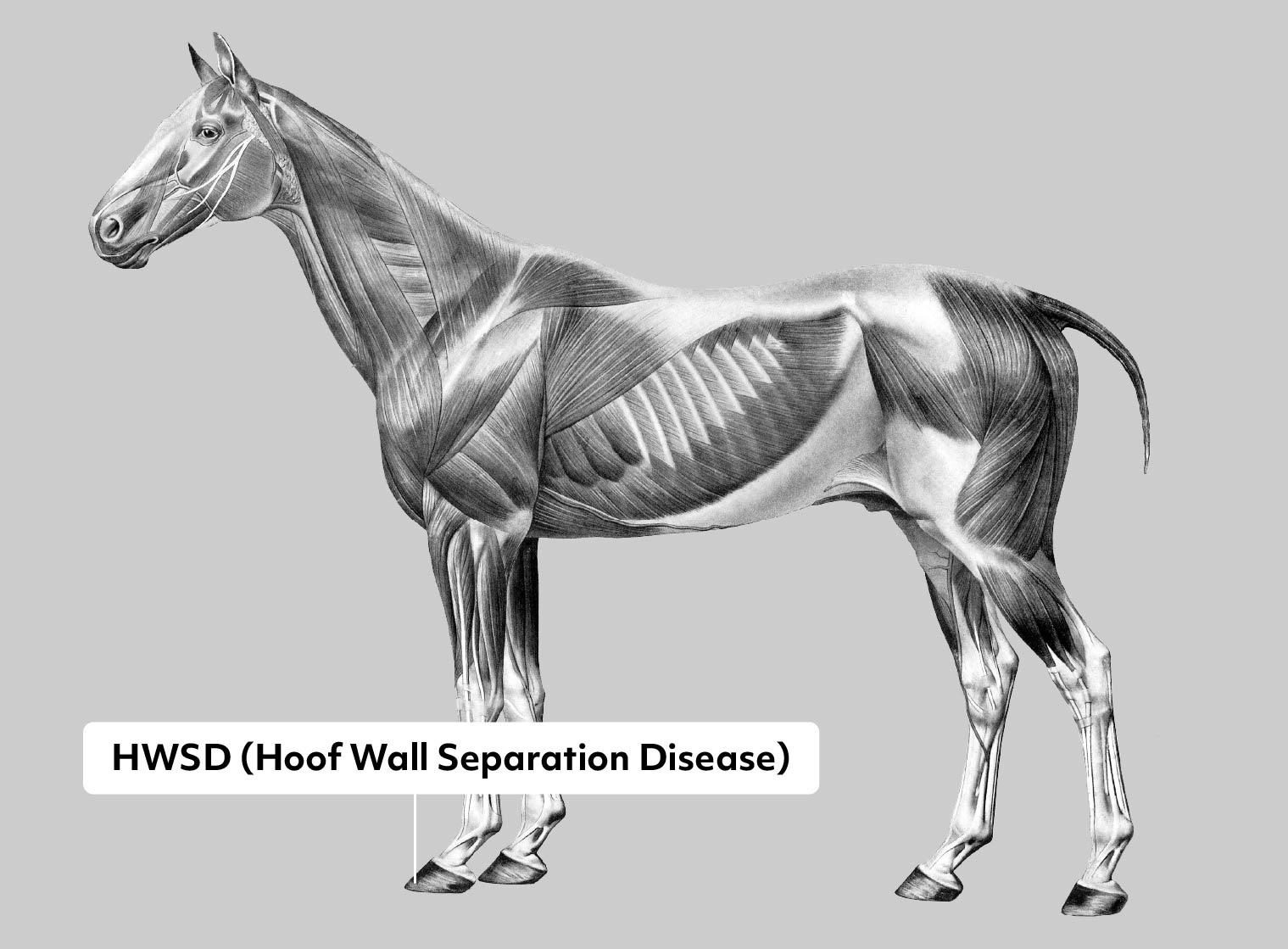Hoof Wall Separation Disease (HWSD)
Gene or Region: SERPINB11
Reference Variant: -
Mutant Variant: C
Affected Breeds: Connemara
Research Confidence: High Confidence - Strong association and functional data in studied population
Explanation of Results: hwsd/hwsd = homozygous for Hoof Wall Separation Disease, trait expressed hwsd/n = heterozygous for Hoof Wall Separation Disease, carrier n/n = no variant detected
Hoof Wall Separation Disease: Genetic Causes, Diagnosis, and Treatment in Horses
Hoof Wall Separation Disease is characterized by separation and breakage of the dorsal hoof wall extending up from the sole. Affected ponies begin showing symptoms at less than 6 months of age, and often develop chronic laminitis. Frequent hoof trimming and glue on shoes can help manage the condition. Hoof wall separation disease is an autosomal recessive disorder, thus a pony must inherit two copies (HWSD/HWSD) to show symptoms. Ponies with only one allele (HWSD/n) are known as carriers due to their ability to produce affected offspring.
Gene Information
SERPINB11 is a serine protease inhibitor of unknown function. In normal horses, it is highly expressed in the corony band. However, the insertion associated with HWSD results in a premature stop codon, resulting in an incomplete protein and greatly decreased expression.
References
Finno CJ et al., “SERPINB11 frameshift variant associated with novel hoof specific phenotype in Connemara ponies.” (2015) PLoS Genet. 11: e1005122. PMID: 25875171
More Horse Health
Junctional Epidermolysis Bullosa 1
Junctional Epidermolysis Bullosa (JEB), also known as red foot disease or hairless foal syndrome, results in the inability to produce the proteins needed to keep the skin on the body. Affected foals exhibit symptoms within days of birth, including blisters at the pressure points, detatchment of the hooves, and oral ulcers. As there is no treatment, affected foals are humanely euthanized.
Kissing Spines Susceptibility Risk
Kissing Spines Susceptibility (KSS) evaluates a horses genetic risk for developing Kissing Spines. Horses diagnosed with Kissing Spines will have two or more dorsal spinous processes that are too close together, touch, or even overlap. This bone-on-bone grinding causes varying degrees of pain, and thus decreased mobility.
Lavender Foal Syndrome
Lavender foal syndrome (LFS), also known as coat color dilution lethal, is a neurological dysfunction in newborn foals. Symptoms are apparent at birth and include seizures, severe hyper-extension of limbs, neck and back, stiff paddling leg movements, involuntary eye movement and inability to stand or sit upright. The coat usually has a dilute color that ranges in shade from silver to a pale lavender/pink. As there is no treatment, affected foals are humanely euthanized.
